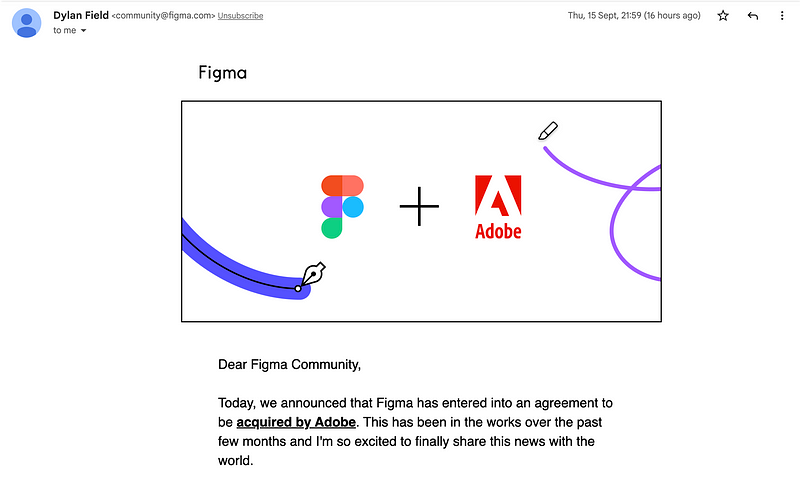Adobe's $20 Billion Figma Acquisition: A Designer's Dilemma
Written on
The Impact of Adobe's Acquisition on the Design Community
The recent news of Adobe's acquisition of Figma, a beloved design tool, has sent shockwaves through the design community. Many designers are left wondering if this marks a historic turning point or a potential misstep.

Figma's Rise in the Design World
Since its debut, Figma has transformed the design landscape. Designers were often frustrated with the complex coding required for prototyping and animations. Figma stepped in with a no-code, browser-based platform that is easy to learn and quick to use.
This low barrier to entry allowed both beginners and seasoned professionals to embrace Figma, leading to its widespread popularity. The platform didn't just rest on its laurels; it continuously evolved, listening to user feedback and enhancing its features.
Moreover, Figma introduced collaboration tools like FigJam, which rivals Miro and allows teams to brainstorm seamlessly within the platform. Its organizational features also help large teams synchronize their designs effectively, making it the go-to choice for companies like Headspace and Spotify.
While various design tools exist, none have matched the comfort level that Figma offers, leading to its meteoric rise.
Adobe's Longstanding Market Presence
Adobe has been a dominant player in the design software industry since the early 1980s, renowned for products like Photoshop and Illustrator. However, despite their extensive experience, their own UX design tool, Adobe XD, never gained the same traction as Figma.
This prompted Adobe to take a different approach: instead of improving their tool, they decided to acquire their competitor.

The Community's Reaction to the Acquisition
As a designer with over four years of experience, I felt the impact of this news profoundly. Having started with Sketch and briefly using Adobe XD, I found my footing with Figma and have used it at every subsequent workplace.
When the email from Figma's team announcing their acquisition by Adobe arrived, it felt like a devastating blow. The reality is that over 90% of tech mergers have resulted in failures, and history shows that Adobe has previously acquired companies without maintaining their innovative spirit.

Designers are concerned that this acquisition will hinder Figma's ability to evolve. We desire software that remains independent and responsive to our needs, rather than being absorbed into Adobe's ecosystem, which could lead to increased prices and reduced innovation.
The Future of Figma and UX Design
Critics may argue that Figma is primarily a UI tool; however, UX and UI go hand in hand. A UX designer's work is incomplete without using design tools like Figma.
For now, Adobe has stated that Figma will operate independently, but the uncertainty surrounding the merger raises concerns. The $20 billion price tag could overshadow innovation and passion that have driven Figma's success.
Adobe and Figma Deal Has Ended (My Next Steps): In this video, the implications of Adobe's acquisition and its effects on Figma's future are discussed.
In the corporate world, financial interests often overshadow creativity and user satisfaction. Designers lament that Figma’s community wasn’t consulted in this decision.
Moving forward, we hope Figma can integrate Adobe’s vast expertise without losing its unique identity. Yet, the fear of stagnation looms large, as history suggests.
Why did Adobe spend 20 BILLION DOLLARS for Figma???: This video explores the motivations behind Adobe's acquisition and the potential ramifications for the design community.
As we await the future, uncertainty hangs in the air. Will this acquisition be a boon for innovation or a burden for designers everywhere? Only time will tell.